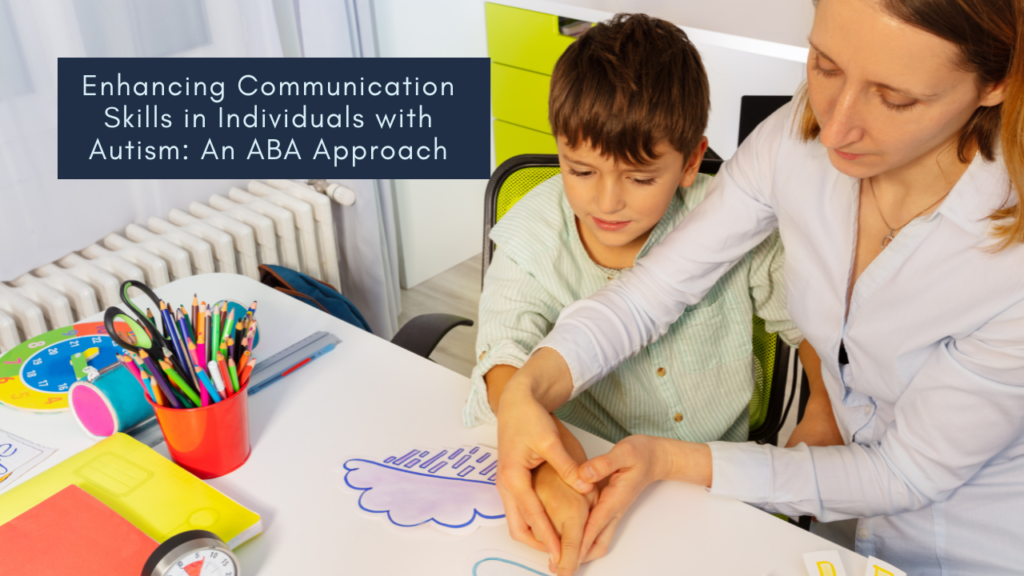People are social animals. Our well -being depends on a well relationship and interaction with other people. And the basis of well relationships and interactions is communication. We express our feelings and thoughts through communication, both orally and non -verbally, every day to interact with people in our community.
Increasing communication skills in people with autism: ABA approach
Author: Blain Hockridge
However, in the case of people with an autism spectrum disorder (ASD), communication, which most of us consider something obvious, can be extremely complex. This challenge deprives them of their significant, enriching part of human experience. Fortunately, the analysis of used behaviors (ABA) has developed many empirically approved techniques that facilitate people with autism communicate more effectively.
Training of verbal behavior
Training of verbal behavior It consists in combining the words of a person with his goal or “function”. It was developed by the Behaviorist BF Skinner, who classified the language on individual skills or “operants”. The main operators are fines, echoes and clock.
Manding or request is the first skill taught in verbal behavior programs and one of the most significant. The function of the mandu is to get something that a student wants, for example food or toys. The therapist or guardian learn vocal or gestures (for example by indicating), and then the student provides this subject. Manding is a necessary skill because it allows the student to indicate what they want.
Echoic is simply an act of imitating vocally. This teaching includes strengthening the successful repetition of the sound or word that the teacher emits. This is a key ability to acquire for a student, because imitating others is the way we learn recent sounds and words. Echo teaching is often used in combination with didactic fines, by successfully repeating the word (such as “toy”), and then rewarding it when they speak the word in the presence of an element that represents the word; In this case, giving them a toy.
The tacting is that a student meaning something in their environment to obtain the attention of a guardian or peers. Tacting is usually taught by showing photos or providing subjects to students in their natural environment, and then vocal praising them for the successful marking of the subject.
Functional communication training
Related to wotka training is a method of teaching communication called Functional communication training (FCT). This includes the replacement of the student’s undesirable behavior, such as aggression, functional communication skills to provide the student with positive tools to meet their needs and needs.
This is done primarily by tactics called differential reinforcement, i.e. when the teacher ignores or redirects the student’s undesirable behavior, and then assembles functionally equivalent communication skills. This can facilitate reduce the frustration that can occur when a student cannot convey what he wants. The ability to communicate can be noisy or include moving and alternative communication (AAC).
Move and alternative communication (AAC)
Increasing and alternative communication It simply refers to various ways of communication that does not include vocal speech. AAC can be “without technology”, “low-tech” or “high-tech”. “AAC without technology” may include gesturing, signing or facial expressions. These behaviors are “shaped” to strengthen subsequent approximations of the desired behavior. For example, transferring a fist towards the desired object can be initially strengthened, until the element is obtained, a full point of your finger is required.
“Low-Tech” AAC can operate the image exchange communication system (PECS). Pecs consists in using a book or a board containing photos of subjects that the student must pass on to the teacher or guardian to get the desired subject. “High-Tech” AAC can be a tablet, which the student can operate to vocate the desired speech after pressing the appropriate button.
The whole world of possibilities opens when we learn to communicate for the first time. Suddenly we have more control over our environment and we do not depend on others to determine what we want. While usually functioning people can treat this ability for granted, communication can be a real fight for millions of people with autism. Fortunately, using the analysis of used behavior, increased awareness of autism and care psychologists And carers these people can get the necessary communication skills that provide better and more enriching life.


